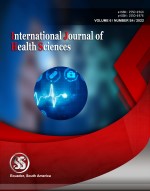Drone based contactless disinfectant spraying system
A safety COVID measures
Keywords:
Coronavirus, COVID-19, disinfectant, spraying drone, antiseptic-disinfectant, denaturationAbstract
The recent pneumonia spread brought about by a novel corona virus (COVID-19) in china is representing an incredible risk and proclaimed a worldwide emergency of public health. It has spread to the world and infected people with COVID-19 disease. In addition to the absence of explicit treatment as well as vaccine, COVID-19 are currently known to reveal a noteworthy environmental resistance. The transmission of virus was found to be spread through human –to –human that make it easily diffused. The transmission comes from the droplets of infected when sneezing or coughing. These droplets can survive on the inanimate surface even in air and transmitted the virus to human. The aim of our project is to design and develop an antiseptic disinfection spraying system has ability to disinfect large scale area with less time consuming and minimal human interactions. The range of drone is 100m and speed 8m/s then flight time is 15 min. It additionally proposes detail of the range of antiseptic –disinfectant and denaturation that have been used in this operation.
Downloads
References
T. Amukele. Current state of drones in healthcare: Challenges and opportunities. J Appl Lab Med, 4 (2) (2019), pp. 296-298
S. Sreenath, H. Malik, N. Husnu, et al. Assessment and use of unmanned aerial vehicle for civil structural health monitoring ProcediaComputSci, 170 (2020), pp. 656-663
M. Mallek, J. Euchi, Y. Jerbi, A review on optimization modeling of hybrid energy systems, J. Euchi (Ed.), Transportation, logistics, and supply chain management in home healthcare: Emerging research and opportunities, IGI Global, Hershey (2020), pp. 29-62
S. Frifita, M. Masmoudi, J. Euchi. General variable neighborhood search for home healthcare routing and scheduling problem with time windows and synchronized visits Electron Notes Discrete Math, 58 (2017), pp. 63-70
S.H. Kim. Choice model based analysis of consumer preference for drone delivery service. J Air Transp Manage, 84 (2020), pp. 1017-1085
J. Euchi, Transportation, logistics, and supply chain management in home healthcare: Emerging research and opportunities IGI Global, Hershey (2020)
J. Euchi, H. Chabchoub. Hybrid metaheuristics for the profitable arc tour problem. J Oper Res Soc, 62 (11) (2011), pp. 2013-2022
G. Winter, COVID-19 and emergency planning. Br J Healthc Manage, 26 (4) (2020), pp. 1-3
A.S. Betancourt, Consensus-based and network control of fixed wing unmanned aerial vehicles [Dissertation] The University of Texas at San Antonio, San Antonio (2020)
Cassandras CG, Li W. A receding horizon approach for solving some cooperative control problems. Proceedings of the 41st IEEE conference on decision and control; 2002 Dec 10 -13; Las Vegas, USA. Piscataway: IEEE Press; 2002. p. 3760-5.
J. Sánchez-García, J.M. García-Campos, M. Arzamendia, et al. A survey on unmanned aerial and aquatic vehicle multi-hop networks: Wireless communications, evaluation tools and applications Comput Commun, 119 (2018), pp. 43-65
Rinartha, K., & Suryasa, W. (2017). Comparative study for better result on query suggestion of article searching with MySQL pattern matching and Jaccard similarity. In 2017 5th International Conference on Cyber and IT Service Management (CITSM) (pp. 1-4). IEEE.
A. Ryan, C. Fitzpatrick, E. Christofa, et al. Driver performance due to small unmanned aerial system applications in the vicinity of roadways Transp Res Part F: Traffic PsycholBehav, 6
Khidoyatova, M. R., Kayumov, U. K., Inoyatova, F. K., Fozilov, K. G., Khamidullaeva, G. A., & Eshpulatov, A. S. (2022). Clinical status of patients with coronary artery disease post COVID-19. International Journal of Health & Medical Sciences, 5(1), 137-144. https://doi.org/10.21744/ijhms.v5n1.1858
Published
How to Cite
Issue
Section
Copyright (c) 2022 International journal of health sciences

This work is licensed under a Creative Commons Attribution-NonCommercial-NoDerivatives 4.0 International License.
Articles published in the International Journal of Health Sciences (IJHS) are available under Creative Commons Attribution Non-Commercial No Derivatives Licence (CC BY-NC-ND 4.0). Authors retain copyright in their work and grant IJHS right of first publication under CC BY-NC-ND 4.0. Users have the right to read, download, copy, distribute, print, search, or link to the full texts of articles in this journal, and to use them for any other lawful purpose.
Articles published in IJHS can be copied, communicated and shared in their published form for non-commercial purposes provided full attribution is given to the author and the journal. Authors are able to enter into separate, additional contractual arrangements for the non-exclusive distribution of the journal's published version of the work (e.g., post it to an institutional repository or publish it in a book), with an acknowledgment of its initial publication in this journal.
This copyright notice applies to articles published in IJHS volumes 4 onwards. Please read about the copyright notices for previous volumes under Journal History.
















